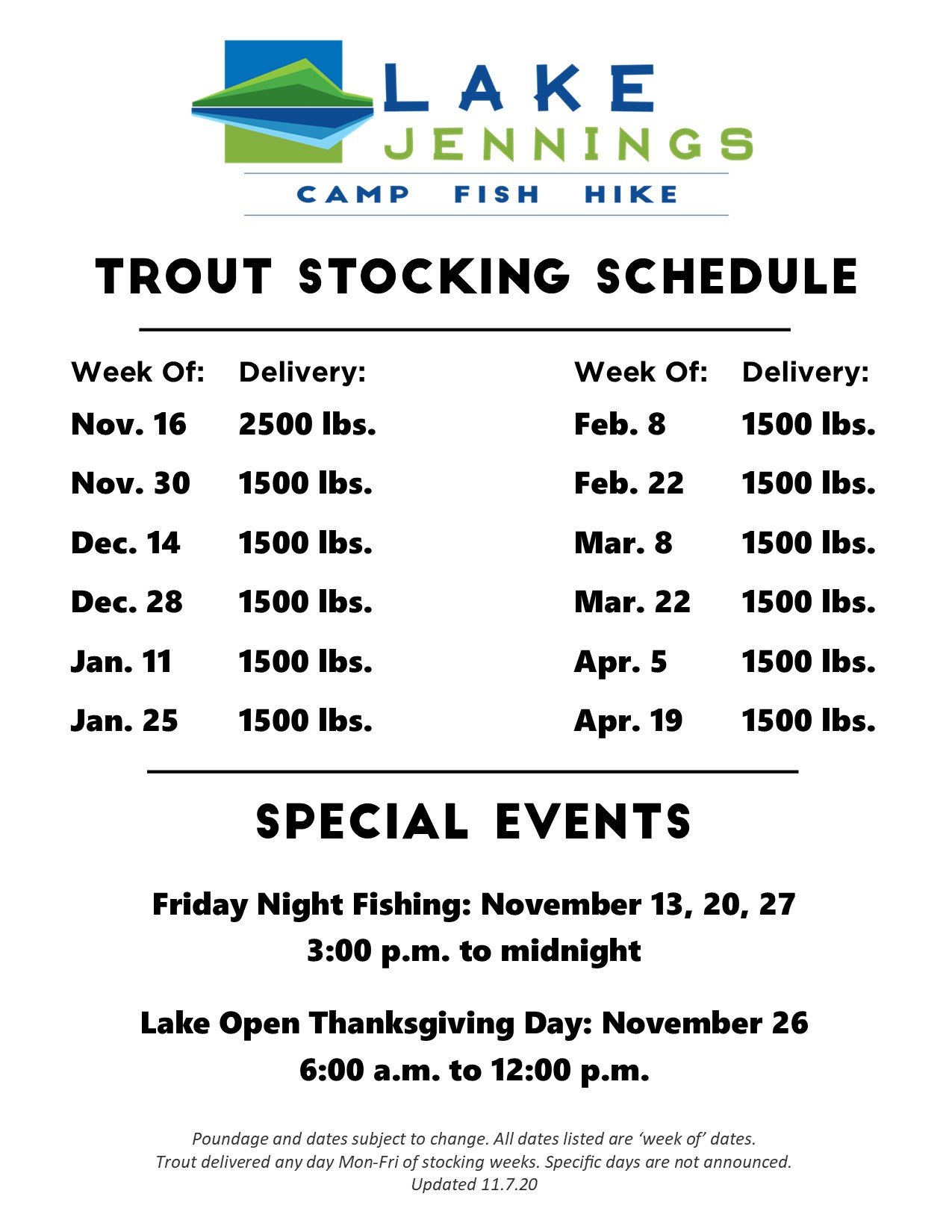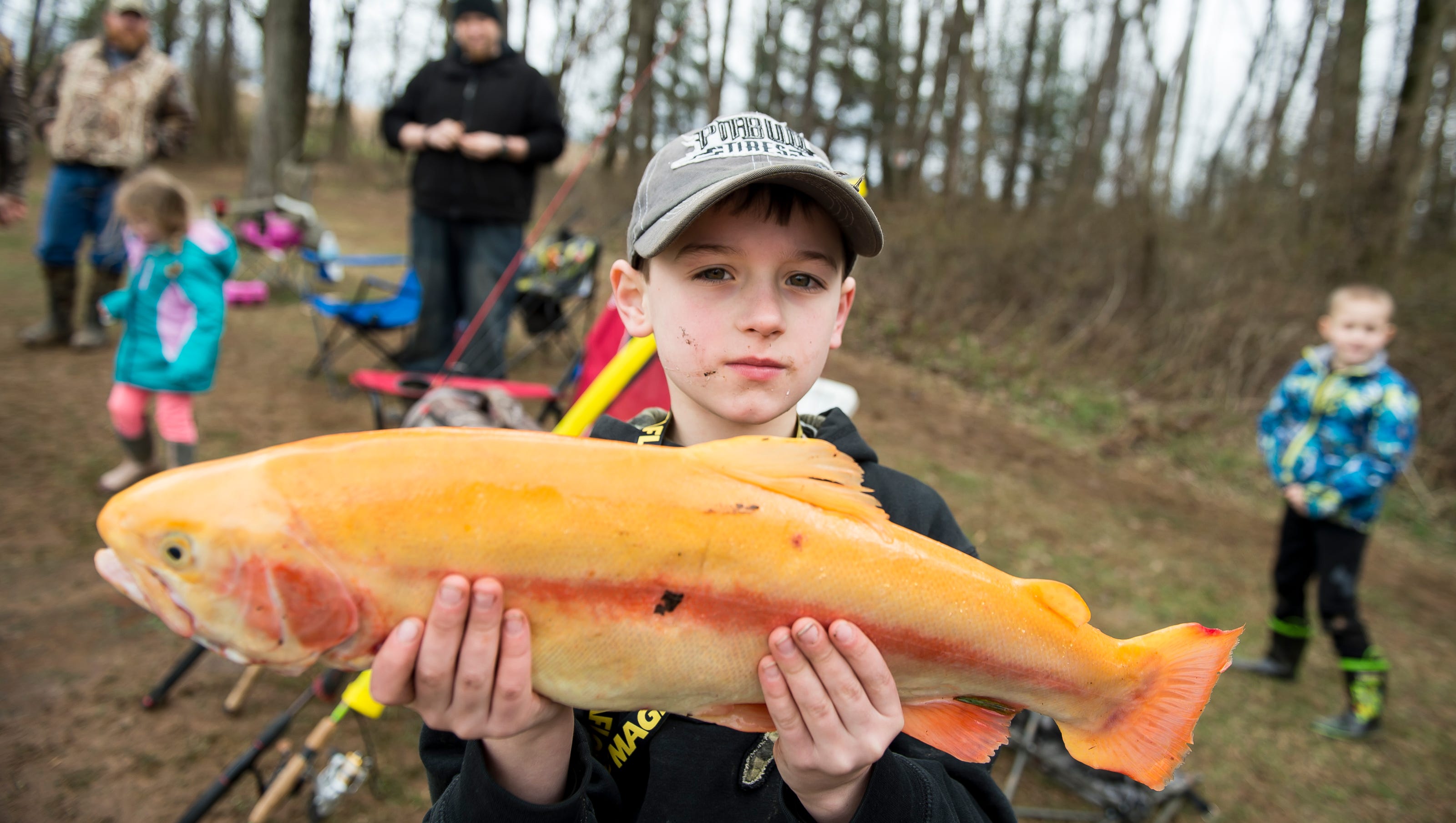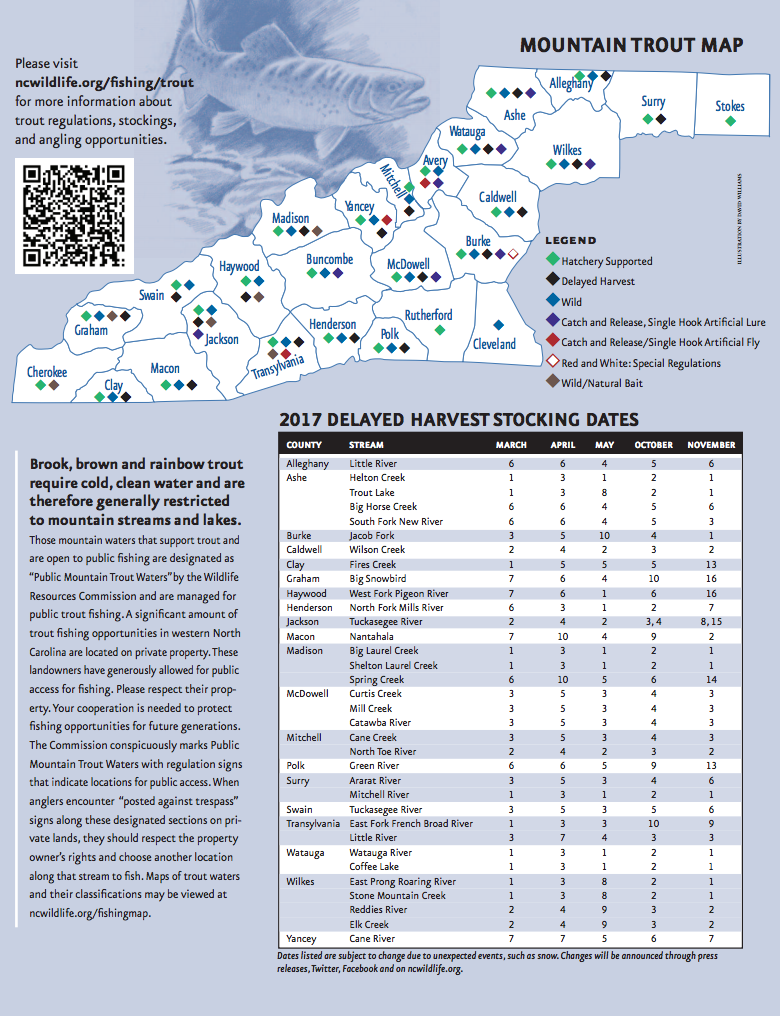Trout Stocking Schedule: Your Ultimate Guide To Catching The Big Ones
Ever wondered when the best time is to hit the water for some trout fishing? Well, buckle up because we’re diving deep into the world of trout stocking schedules. Whether you’re a seasoned angler or a weekend warrior looking to reel in some fun, understanding the trout stocking schedule can make all the difference. From knowing when the fish are stocked to figuring out the best spots, this guide’s got you covered.
Trout stocking schedules aren’t just random dates on a calendar; they’re carefully planned events that can transform your fishing experience. Fish and Game departments across the country work hard to ensure that lakes, rivers, and streams are well-stocked with trout, so you don’t go home empty-handed. But here’s the deal: not all schedules are created equal, and knowing the ins and outs can mean the difference between a trophy catch and a frustrating day on the water.
This guide will break down everything you need to know about trout stocking schedules, from the basics to advanced strategies. So grab your favorite fishing hat, and let’s dive in. Your next big catch is just around the corner!
Table of Contents
- What is Trout Stocking?
- Why Trout Stocking Matters
- When Do They Stock Trout?
- How to Find Trout Stocking Schedules
- Best Locations for Trout Stocking
- Tips for Successful Trout Fishing
- Trout Stocking Regulations
- Common Mistakes to Avoid
- Frequently Asked Questions
- Conclusion
What is Trout Stocking?
Trout stocking is the process of releasing hatchery-raised trout into lakes, rivers, and streams to enhance fishing opportunities. Fish and Game departments across the country partner with hatcheries to raise these fish until they’re ready for release. The goal is simple: to provide anglers with a better chance of catching trout while maintaining healthy fish populations.
But here’s the kicker – trout stocking isn’t just about dumping fish into the water. It’s a science that involves careful planning, monitoring, and sometimes even a little trial and error. Factors like water temperature, oxygen levels, and food availability all play a role in determining where and when trout are stocked.
Why Hatcheries Are Important
Hatcheries are the backbone of trout stocking programs. They’re where trout are raised from eggs to fingerlings and eventually grow into full-sized fish ready for release. Without hatcheries, trout populations in many areas would struggle to sustain themselves due to habitat loss, pollution, and other environmental challenges.
Why Trout Stocking Matters
Trout stocking is more than just a way to improve fishing. It’s a vital part of conservation efforts that help maintain healthy ecosystems. By stocking trout in areas where natural populations have declined, Fish and Game departments can restore balance to aquatic environments while providing recreational opportunities for anglers.
And let’s not forget the economic impact. Fishing is big business, and trout stocking plays a key role in attracting anglers to specific regions. This, in turn, boosts local economies through increased tourism, gear sales, and related industries. So whether you’re a hardcore angler or just enjoy spending time on the water, trout stocking benefits everyone.
Economic Benefits of Trout Stocking
Did you know that recreational fishing generates billions of dollars in revenue each year? Trout stocking is a key driver of this economic activity, drawing anglers from all over to try their luck at catching one of these prized fish. From tackle shops to hotels and restaurants, the ripple effect of trout stocking is felt throughout local communities.
When Do They Stock Trout?
The timing of trout stocking varies depending on the region and the specific waterbody. In general, trout are stocked during the spring and fall when water temperatures are cooler and more conducive to their survival. However, some areas may have year-round stocking programs to meet demand.
Here’s a quick breakdown of typical trout stocking schedules:
- Spring: March through May – Ideal for stocking rainbow and brown trout.
- Fall: September through November – Great for stocking larger fish like brook and cutthroat trout.
- Summer: Limited stocking in high-altitude lakes and streams where water temperatures remain cool.
Factors Influencing Stocking Times
Several factors influence when trout are stocked, including water temperature, oxygen levels, and the availability of food sources. For example, stocking trout in the middle of summer in a low-altitude lake might not be the best idea if water temperatures are too high. Similarly, stocking during freezing winter months could result in low survival rates.
How to Find Trout Stocking Schedules
So, how do you find out when trout are being stocked in your area? Fortunately, there are several resources available to help you stay up to date with the latest trout stocking schedules.
1. State Fish and Game Websites: Most states have dedicated websites where you can find detailed information on trout stocking schedules. These sites often include maps, stocking dates, and even live updates.
2. Fishing Apps: There are plenty of fishing apps that provide real-time updates on trout stocking schedules. Some even offer GPS tracking to help you locate stocked areas.
3. Local Fishing Clubs: Joining a local fishing club can be a great way to stay informed about trout stocking schedules. Members often share tips and insights on the best times and places to fish.
Pro Tip: Check Weekly Updates
Many Fish and Game departments release weekly updates on their trout stocking schedules. These updates can be invaluable for planning your fishing trips, so make sure to check them regularly.
Best Locations for Trout Stocking
Not all lakes and streams are created equal when it comes to trout stocking. Some areas are known for their consistent stocking programs and high catch rates, while others may only see occasional stockings. Here’s a look at some of the best locations for trout stocking across the country.
Top 5 Trout Stocking Locations
- Colorado: Known for its high-altitude lakes and streams, Colorado is a hotspot for trout fishing enthusiasts.
- Pennsylvania: With over 8,000 miles of stocked trout waters, Pennsylvania offers plenty of opportunities for anglers.
- California: From the Sierra Nevada mountains to coastal rivers, California boasts a diverse range of trout fishing destinations.
- Michigan: The Great Lakes region is home to some of the best trout fishing in the country.
- Utah: With its pristine mountain lakes and streams, Utah is a paradise for trout anglers.
Tips for Successful Trout Fishing
Knowing the trout stocking schedule is only half the battle. To increase your chances of success, here are some tips to keep in mind:
- Use the Right Gear: Match your tackle to the size and type of trout you’re targeting. Lightweight rods and reels work well for smaller trout, while heavier setups are better for larger species.
- Choose the Right Bait: Trout are notorious for being picky eaters, so experiment with different baits to see what works best. Worms, PowerBait, and spinners are all popular choices.
- Be Patient: Trout fishing requires patience and persistence. Don’t get discouraged if you don’t catch anything right away – stick with it and you’ll eventually find success.
Advanced Techniques for Serious Anglers
For those looking to take their trout fishing to the next level, consider trying some advanced techniques like fly fishing or using ultralight tackle. These methods can be more challenging but offer a greater sense of accomplishment when you land a big one.
Trout Stocking Regulations
Before you head out to fish, make sure you’re familiar with the regulations in your area. Trout stocking programs are subject to strict rules and guidelines to ensure the health and sustainability of fish populations.
1. Fishing Licenses: Most states require anglers to have a valid fishing license. Make sure yours is up to date before you hit the water.
2. Bag Limits: Pay attention to bag limits, which dictate how many fish you can keep per day. Exceeding these limits can result in hefty fines.
3. Catch-and-Release: Some areas have catch-and-release regulations to protect vulnerable fish populations. Be sure to follow these rules to help preserve trout for future generations.
Common Mistakes to Avoid
Even the most experienced anglers can fall victim to common mistakes when it comes to trout fishing. Here are a few to watch out for:
- Ignoring Stocking Schedules: Fishing without knowing when trout are stocked can lead to frustrating trips. Stay informed and plan accordingly.
- Using the Wrong Bait: Trout can be finicky, so don’t assume that one type of bait will work everywhere. Experiment with different options to find what works best.
- Overfishing: Catching too many fish in one area can deplete populations and ruin the experience for others. Practice responsible fishing and follow regulations.
Frequently Asked Questions
Q: How often are trout stocked?
A: Trout stocking schedules vary by region, but most areas see regular stockings during the spring and fall. Check your local Fish and Game website for the latest updates.
Q: Can I fish for trout year-round?
A: In some areas, yes. However, many regions have seasonal restrictions, so always check the regulations before heading out.
Q: Do I need a special license for trout fishing?
A: In most cases, a standard fishing license will suffice. However, some areas may require additional permits or stamps for trout fishing.
Conclusion
Trout stocking schedules are a crucial part of the fishing experience, offering anglers the opportunity to catch some of the most sought-after fish in the world. By understanding when and where trout are stocked, you can increase your chances of success and enjoy a more rewarding fishing experience.
So, what are you waiting for? Grab your gear, check the latest stocking schedule, and hit the water. And don’t forget to share your experiences with us in the comments below. Happy fishing, folks!

Trout Stocking Schedule 2020 » Lake Jennings

Nc Trout Stocking Schedule 2024 Dedra Evaleen

Md Trout Stocking Schedule 2025 Delaney Ellis